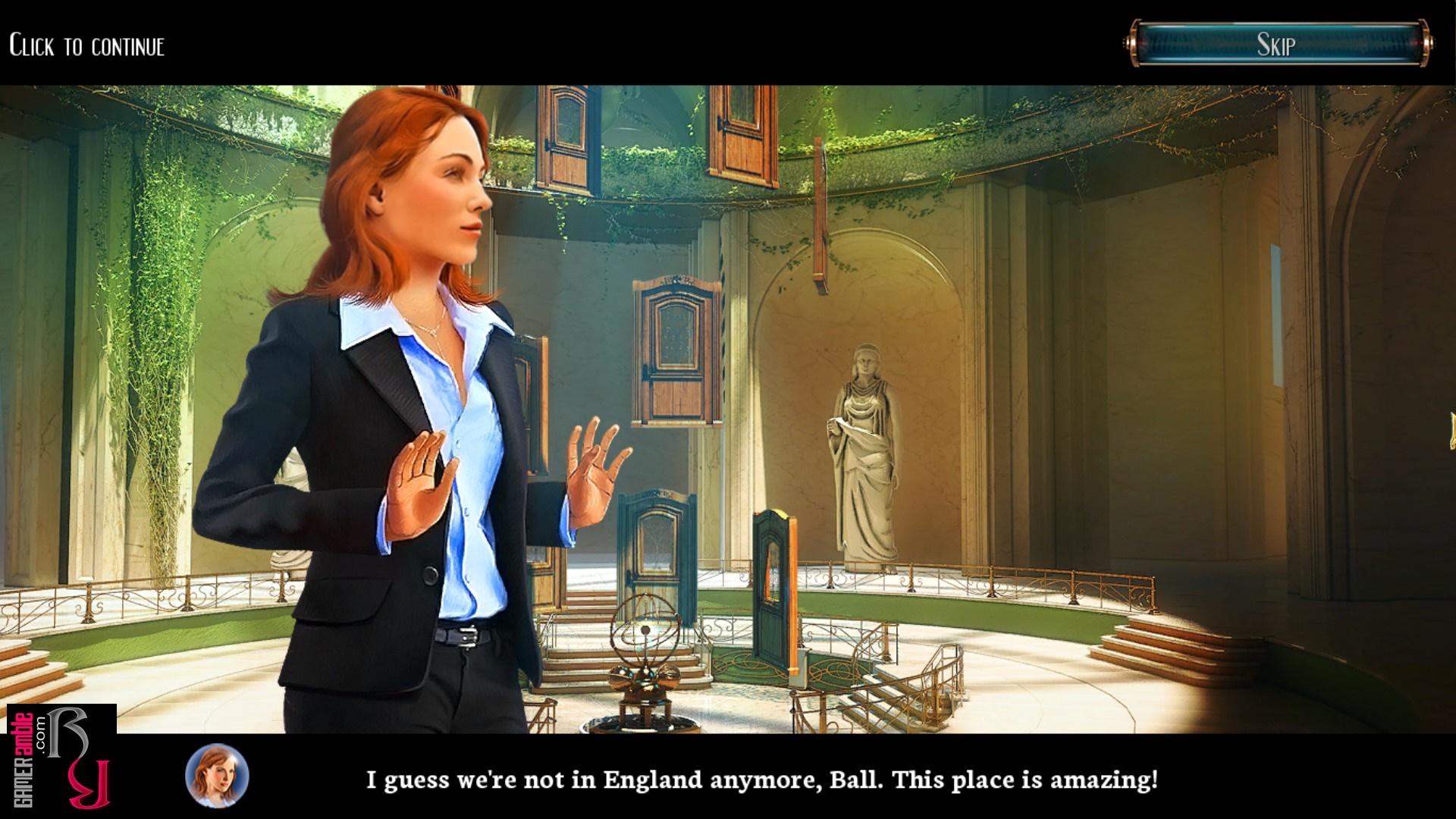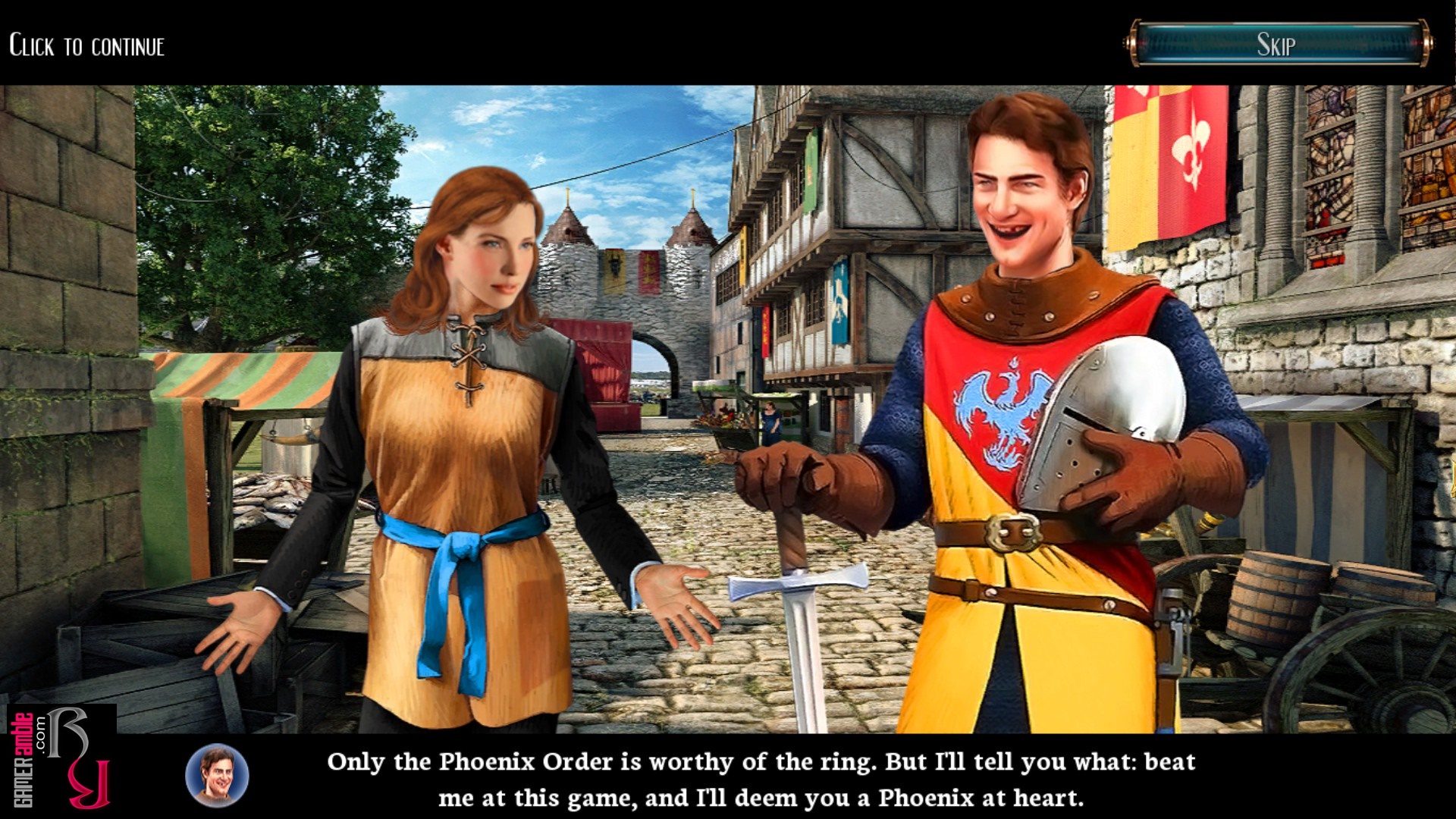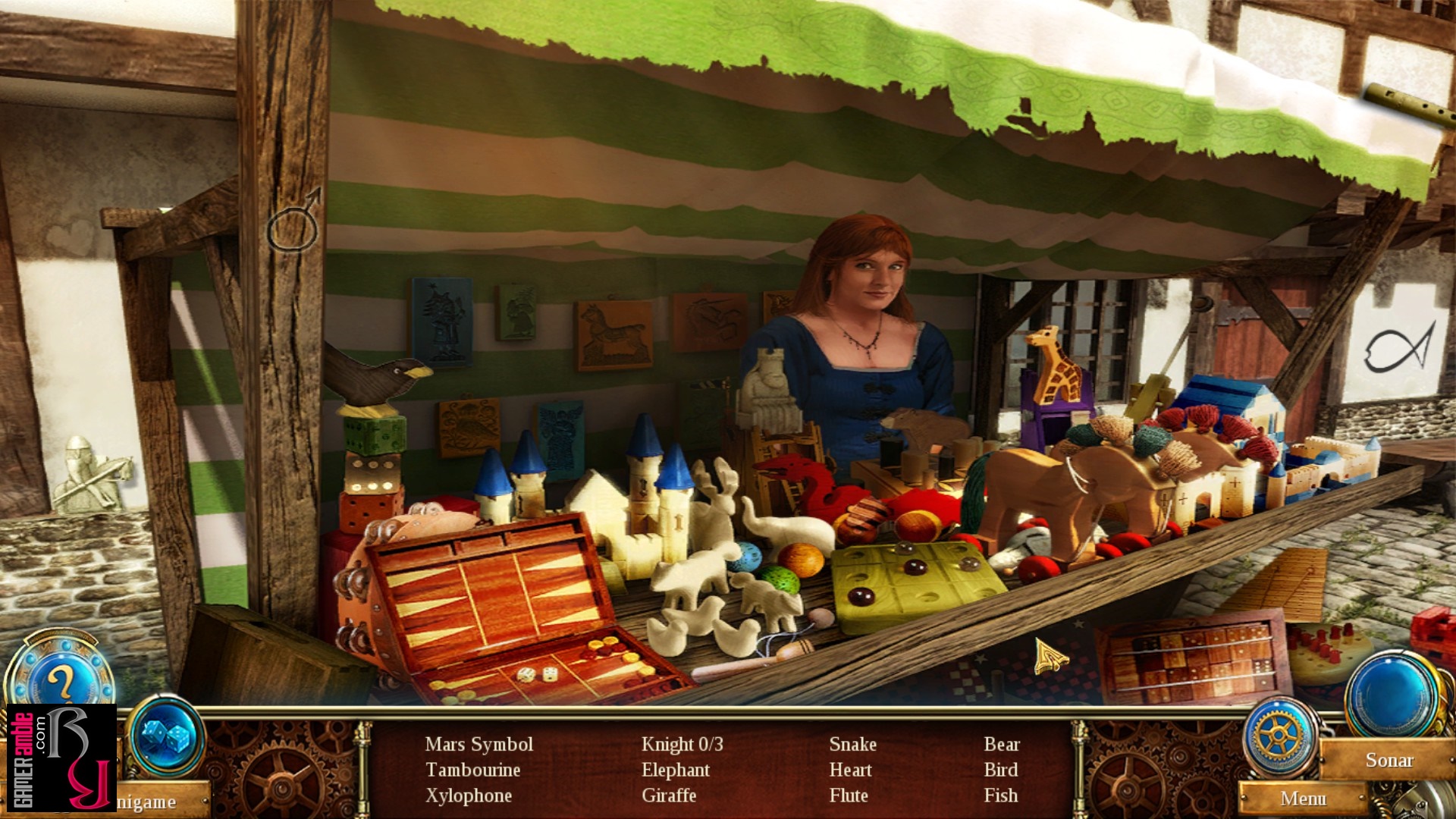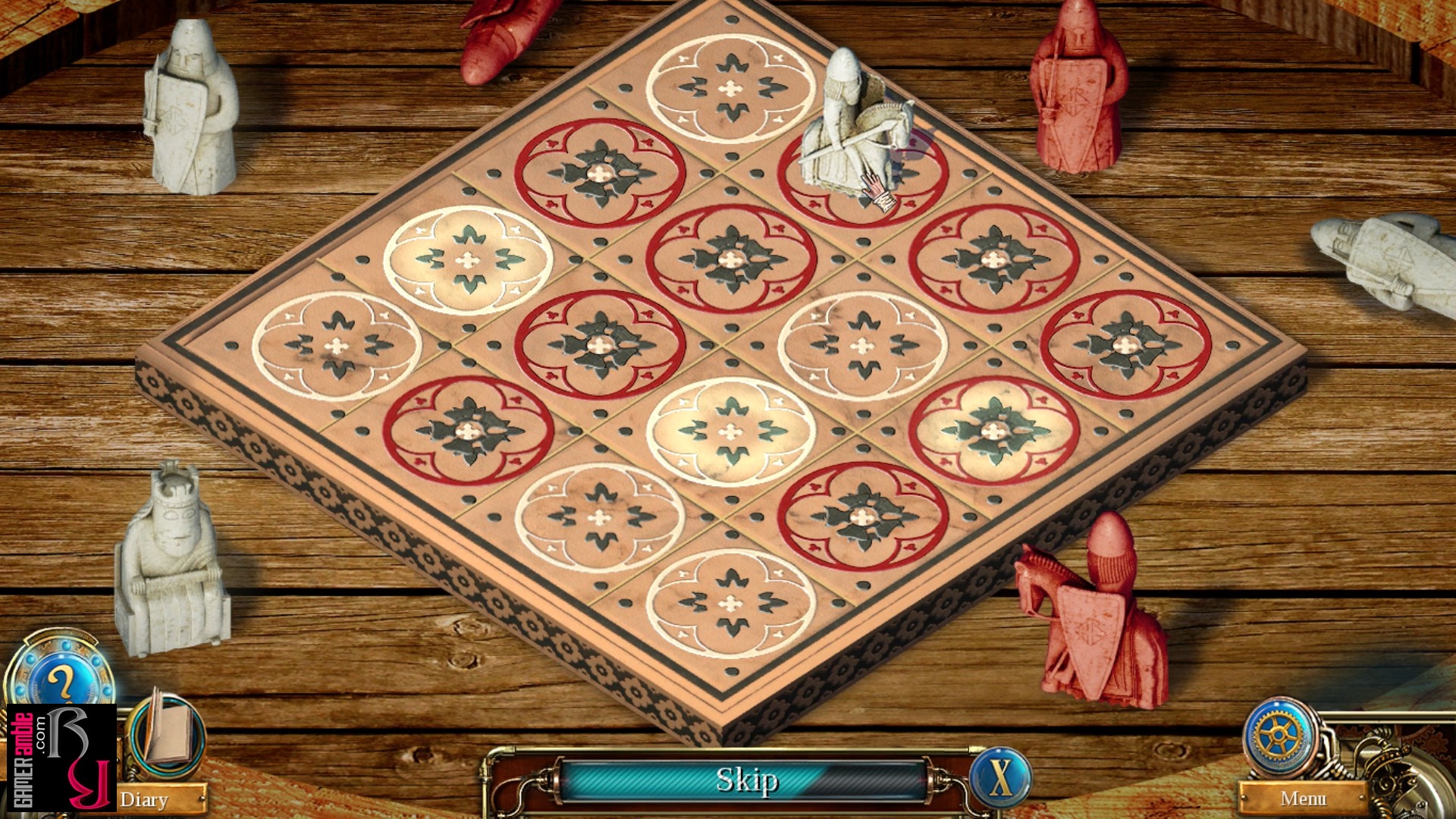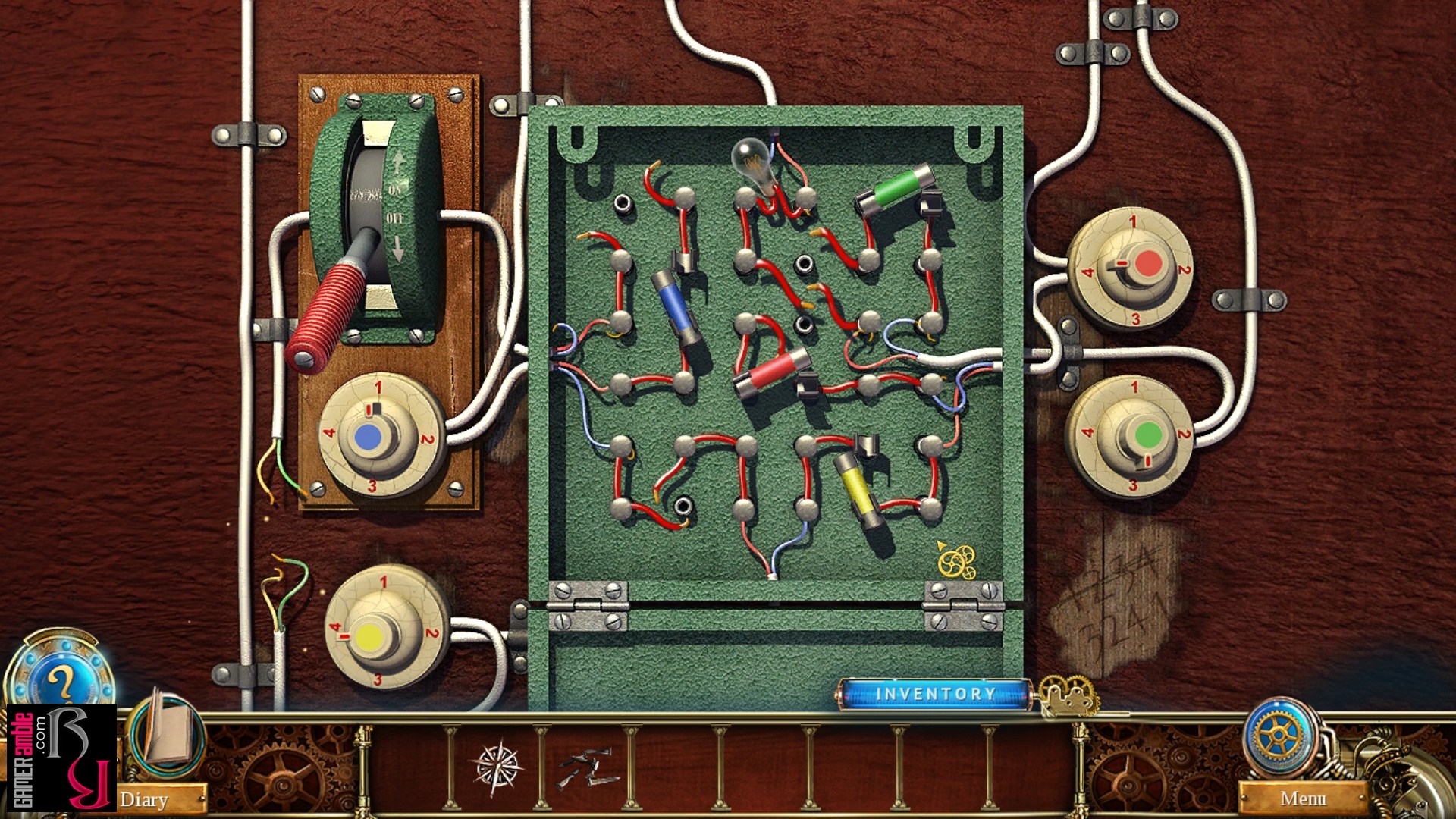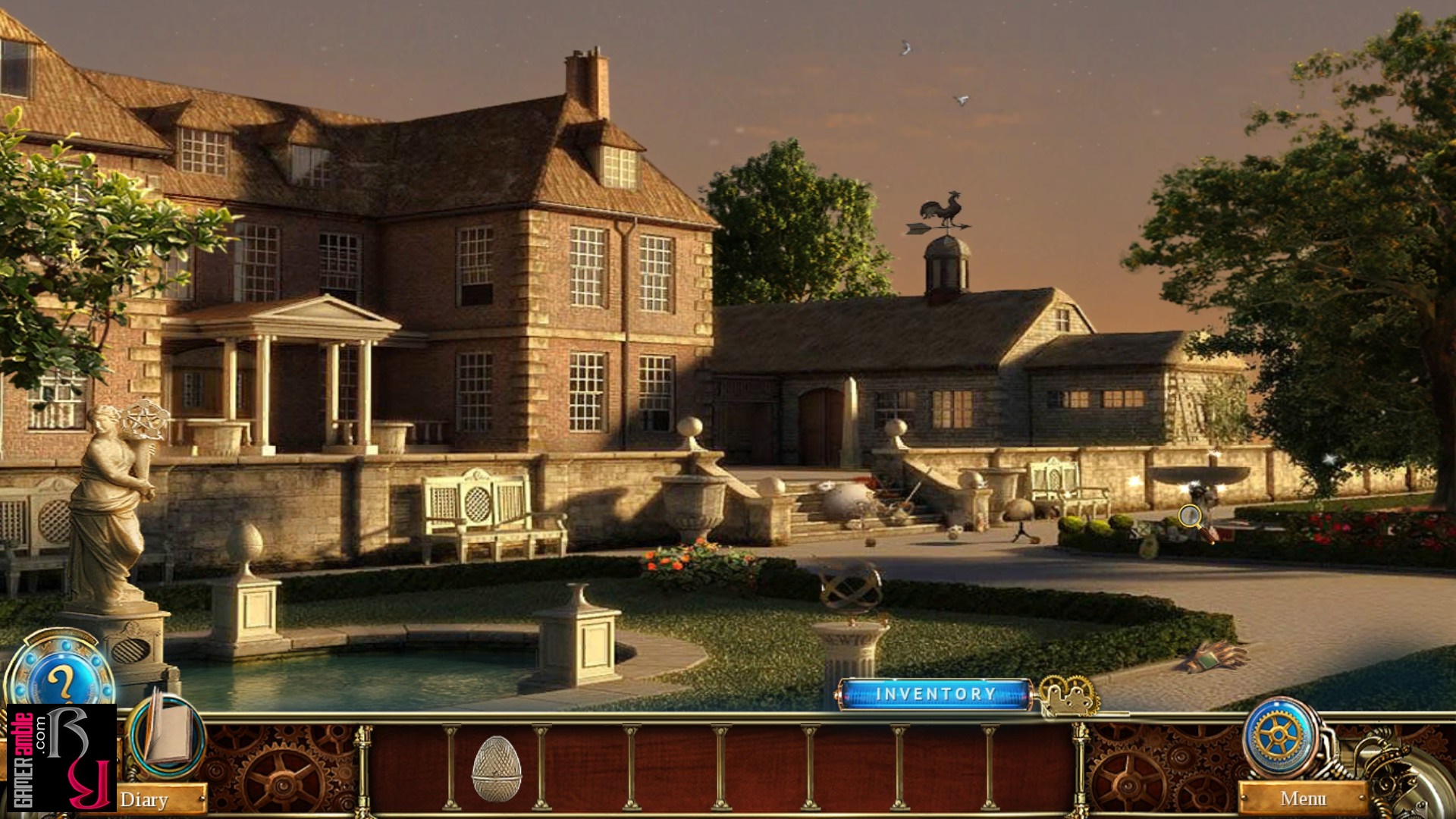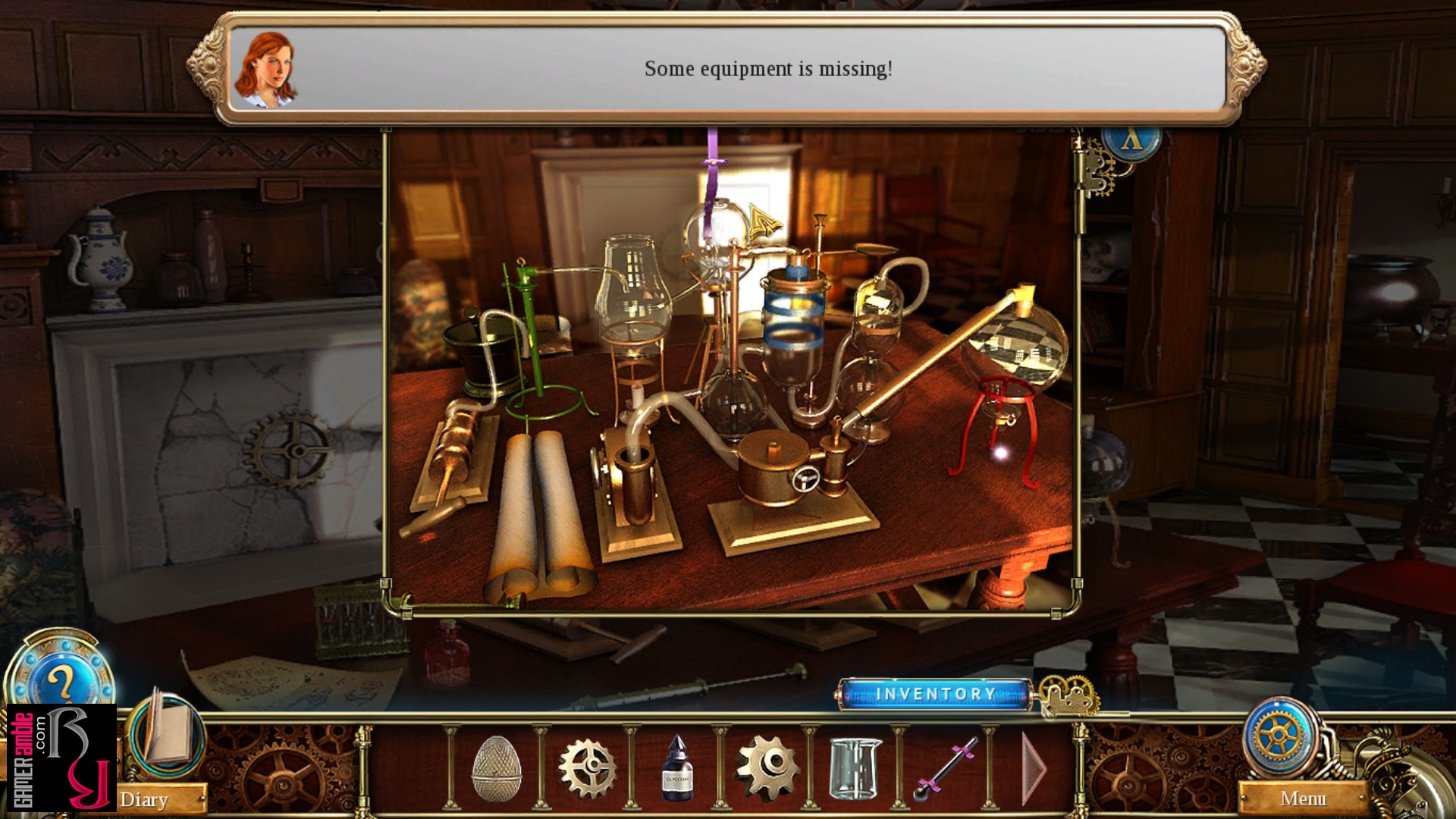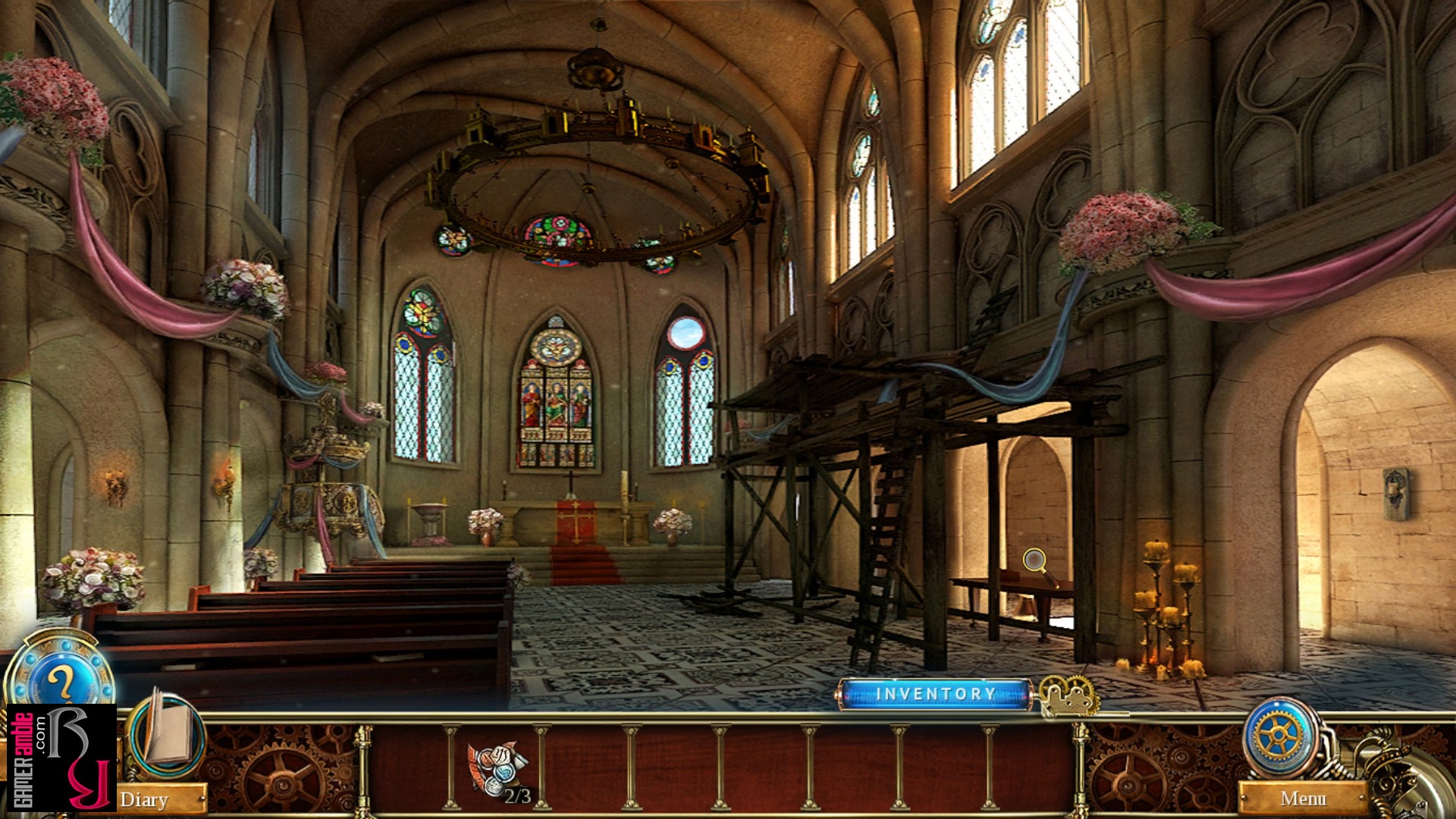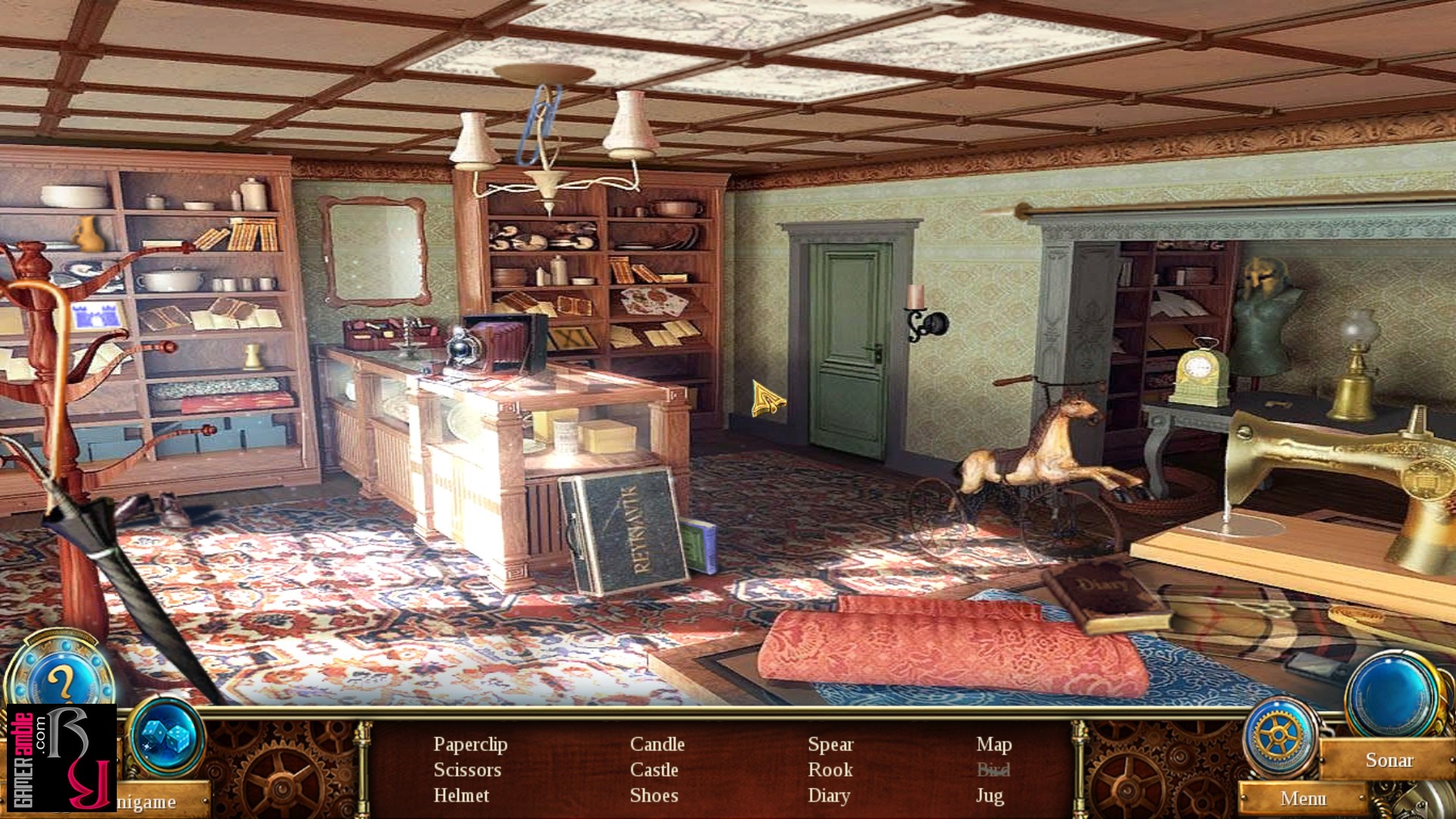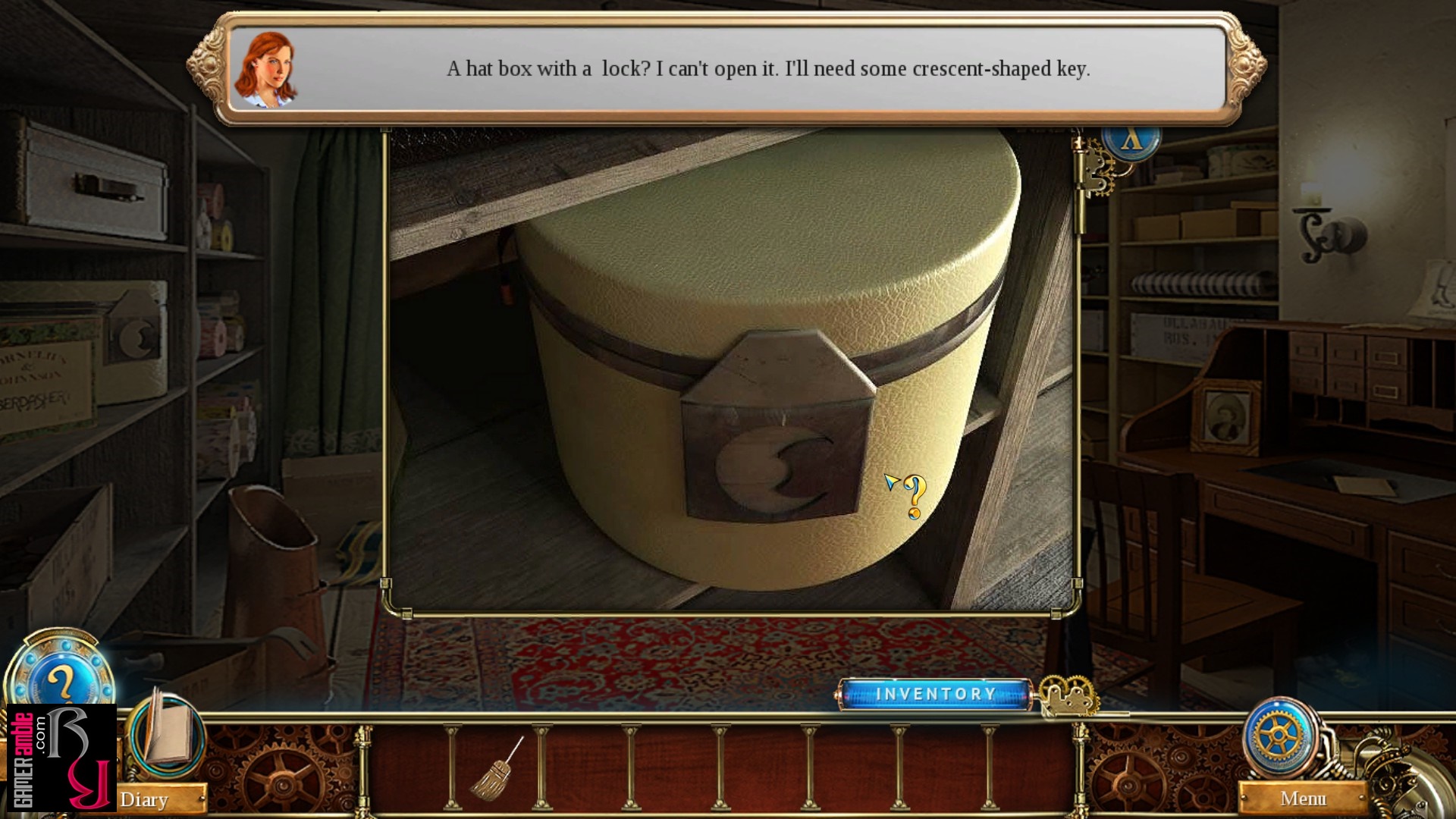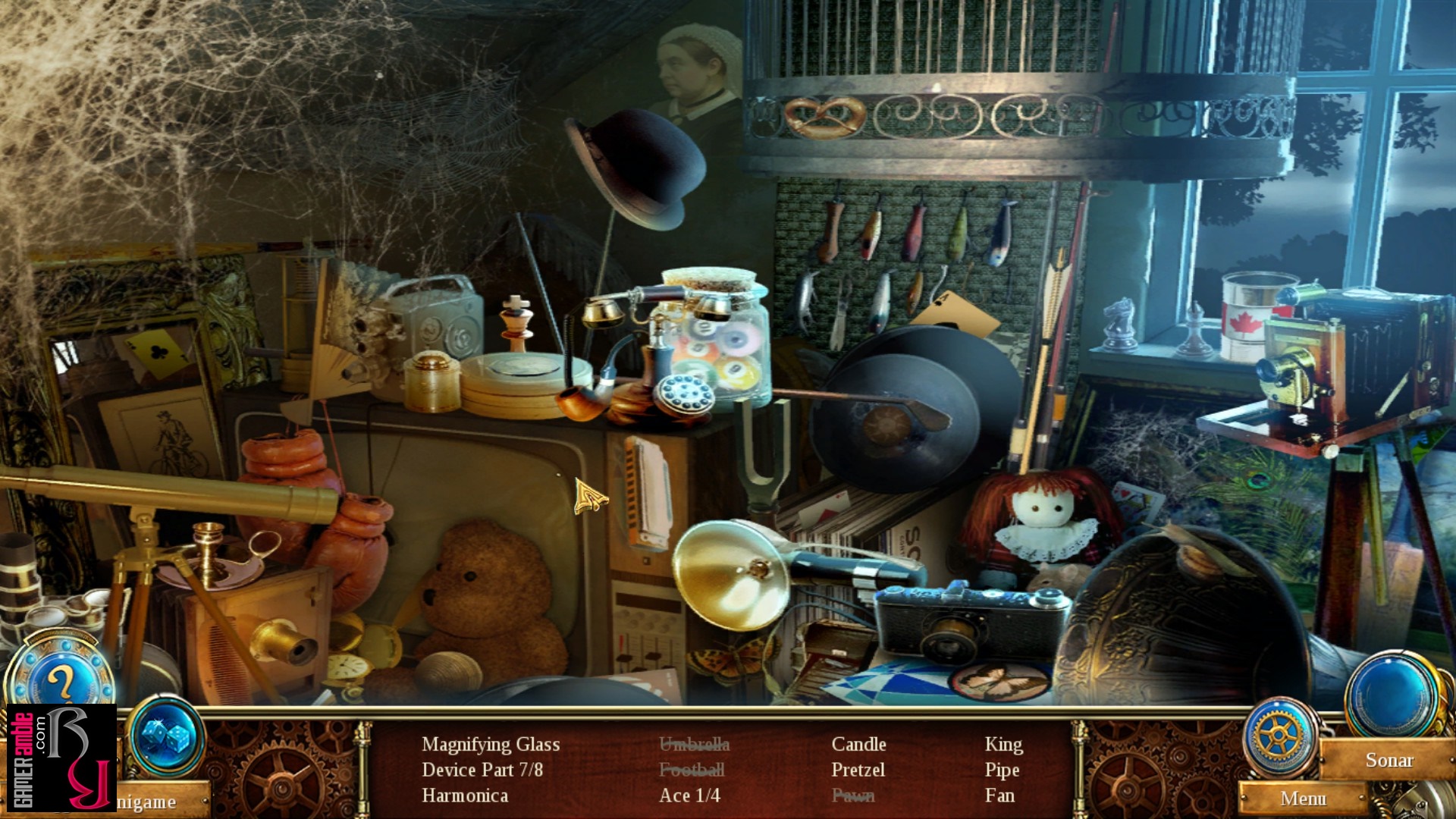Time Mysteries: Inheritance – Remastered
Developer: Artifex Mundi | Publisher: Artifex Mundi | Release Date: 2014 | Genre: Hidden Object / Adventure / Puzzle | Website: Official Website | Purchase: Steam
Even the best had to start somewhere and it’s the same with Artifex Mundi. Although these days they are synonymous with high-quality hidden object games that look and play great some of their early titles are showing their age. One of the earliest is Time Mysteries: Inheritance, which despite getting a “Remastered” release is still nowhere close to the standard of their recent releases.
The protagonist is Vivian Ambrose a brilliant doctor of physics. She is on her way to her father’s house to celebrate a recent scientific achievement when she spots a light in his attic. Normally the room is under lock and key, so Vivian is immediately suspicious about what is going on. Rushing into the house she discovers that her father is missing, but left behind a letter that reveals her inheritance is seven magic rings and a crystal ball. Apparently, these items will allow you to travel through time, which is quite handy as she is informed by the crystal ball that her dad was abducted by a time traveler. Thus begins Vivian’s adventure where she has to travel through time and space to save her father and discover more about the unique legacy of her family along the way.
First things first, anyone who is used to the polished visuals of later titles in the Artifex Mundi catalog might be a bit shocked by the visuals in TM: I. Apparently, the visuals were “enhanced” for the remastered release, but if this is the case, then the original must have looked atrocious. The low resolution of the images means that a lot of the scenes look extremely fuzzy, which is not something you want in a game where most of your time is spent trying to find small objects on busy backgrounds. Even more alarming is the animation, which mostly consists of the character’s heads distorting in disturbing ways when they talk. It is one of the most unintentionally hilarious things we have seen in a while and the less said about the five new cut-scenes the better. Finally, the game features some really distracting lighting effects in some scenes, which serves no purpose other than to induce headaches.
Compared to some of the sprawling locations of later Artifex Mundi games, TM: I is also quite small and basic. You get to travel to locations as far back as the 7th Century with stops in the 8th, 11th, 13th, 15th, and 17th century along the way, but each only has one or two rooms. A mysterious place called the “Nexus Machine” serves as the hub for time travel and requires you to collect items connected to whatever period you want to travel to before a door to go there opens. After completing a location and finding one of the seven rings that you lost in your initial jump you return to the nexus to solve a “spot the differences” puzzle and then repeat the whole process. All in all, there are 24 locations to visit and you must complete 27 minigames as well as 31 hidden object scenes. TM: I is one of the shortest games in the Artifex Mundi catalog and there’s also no bonus chapter to unlock after completing the main game.
In terms of gameplay, the game is very simple and you will be spending most of your time either completing minigames or looking for hidden objects. Vivian does have an inventory, but all of the objects you can pick up are very obvious and usually, you used them right away. There’s no carrying objects back and forth through time or hanging on to things to use them much later. Items cannot be combined in your inventory either, so don’t expect much of a challenge in this regard. The user interface was redesigned for this version of the game, so it should feel familiar to anyone who played some of the more recent Artifex Mundi games. Hints and the ability to skip things are available but should be avoided if you want all of the Steam achievements. The hidden object scenes are very rough around the edges, but the minigame alternative which involves removing groups of three or more gems from a board isn’t much better.
The audio in TM: I is a bit baffling as the game received fully voiced dialog for the remastered edition, but this has arguably made things worse instead of improving anything. Some of the characters sound decent enough, but most of the voice acting is so stiff and wooden that it sounds like an emotionless text-to-speech app was used. The game also lacks the rich sound effects of later titles and the music isn’t too bad except for being rather melancholic and sounding out of place for many scenes.
Overall, it only took us a few hours to get 100% achievements for TM: I on regular mode. The game can also be played on “Expert” mode, which causes the “Hint” and “Skip” buttons to take longer to recharge. Active zones are also not indicated in expert mode and players are penalized for clicking too much in the hidden object scenes. TM: I also only features very basic options, which include being able to adjust the music and sound volume, enabling voice-overs, and playing in windowed or fullscreen mode.
With all said and done Time Mysteries: Inheritance Remastered is a hard game to recommend. Fans of the series who are curious to find out where it all began might find it worth their while as well as players who want a peek into the past of Artifex Mundi. However, for anyone fans of the hidden object game genre, there are far better games out there. TM: I is still playable, but with so many rough edges and cheesy elements it’s not something that makes a lasting impression. If you are new to the genre or want to see why Artifex Mundi is usually praised for their hidden object games, then this is not the place to start.
System Requirements
- Minimum PC System Requirements
- Recommended PC System Requirements
- Minimum Mac OS X System Requirements
- Recommended Mac OS X System Requirements
- Minimum SteamOS + Linux System Requirements
- Recommended SteamOS + Linux System Requirements
- OS: Windows XP, Windows Vista, Windows 7, Windows 8
- Processor: 1.5 GHz
- Memory: 512 MB RAM
- Graphics: 128 MB VRAM
- DirectX: Version 9.0
- Storage: 1 GB available space
- OS: Windows XP, Windows Vista, Windows 7, Windows 8
- Processor: 2 GHz
- Memory: 1 GB RAM
- Graphics: 256 MB VRAM
- DirectX: Version 9.0
- Storage: 1 GB available space
- OS: 10.6.8
- Processor: 1.5 GHz
- Memory: 512 MB RAM
- Graphics: 128 MB VRAM
- Storage: 1 GB available space
- OS: 10.6.8
- Processor: 2 GHz
- Memory: 1 GB RAM
- Graphics: 256 MB VRAM
- Storage: 1 GB available space
- OS: Ubuntu 12.04 (32/64bit)
- Processor: 1.5 GHz
- Memory: 512 MB RAM
- Graphics: 128 MB VRAM
- Storage: 1 GB available space
- OS: Ubuntu 12.04 (32/64bit)
- Processor: 2 GHz
- Memory: 1 GB RAM
- Graphics: 256 MB VRAM
- Storage: 1 GB available space


